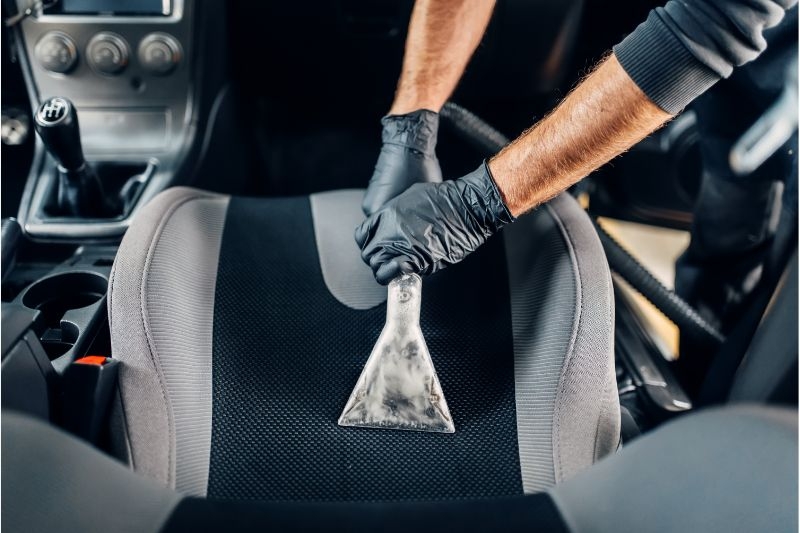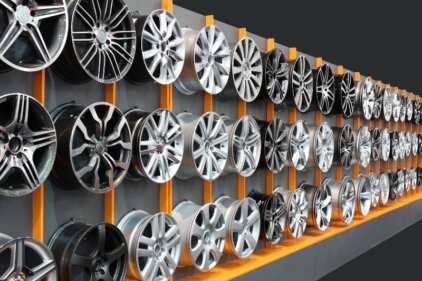As a responsible car owner, I understand the significance of regular car maintenance. Proper car care not only ensures a smooth and safe ride but also extends the lifespan of your vehicle. Neglecting this essential aspect can lead to expensive repairs and compromised performance. Regular maintenance not only saves you money in the long run but also helps you avoid unforeseen breakdowns on the road.
One crucial aspect of car maintenance is keeping up with routine inspections. Regularly checking your car’s fluids, such as oil, coolant, and brake fluid, is vital to ensure optimal performance. Additionally, inspecting the battery, lights, and tires can help detect any potential issues before they become major problems. By addressing these minor concerns promptly, you can prevent them from escalating into expensive repairs.
Another reason why car maintenance is crucial is that it helps maintain your vehicle’s resale value. A well-maintained car with a comprehensive service history is more likely to attract potential buyers and fetch a higher price. So, by investing time and effort into proper car care, you are not only ensuring a smooth ride for yourself but also safeguarding your investment.
Basic Car Care Tips and Tricks
Now that we understand the importance of car maintenance, let’s delve into some basic tips and tricks for effective car care. These simple practices can go a long way in keeping your vehicle in excellent condition.
- Regularly wash and wax your car: Washing your car helps remove dirt, debris, and corrosive substances that can damage the paintwork. Additionally, applying a coat of wax provides a protective layer that enhances the shine and prevents rust.
- Check and maintain proper tire pressure: Properly inflated tires improve fuel efficiency, enhance handling, and ensure a smoother ride. Regularly check your tire pressure using a reliable gauge and adjust it as needed.
- Inspect and replace worn-out windshield wipers: Clear visibility is crucial for safe driving. Inspect your windshield wipers regularly and replace them if they show signs of wear, such as streaking or skipping.
- Keep your car’s interior clean: Regularly vacuuming and cleaning the interior of your car not only enhances its appearance but also prevents the buildup of dust, dirt, and allergens. Use appropriate cleaning products for different surfaces, such as upholstery, dashboard, and carpets.
- Avoid aggressive driving: Aggressive driving habits, such as speeding and sudden braking, can put unnecessary stress on your car’s engine, brakes, and suspension. By adopting a calm and steady driving style, you can minimize wear and tear on your vehicle.
Essential Car Maintenance Tasks
In addition to the basic car care tips and tricks mentioned above, there are certain essential maintenance tasks that should be performed regularly to ensure the longevity and optimal performance of your car.
- Oil change: Regularly checking and changing your car’s oil is vital for the health of its engine. Refer to your car’s manual for the recommended oil change interval and ensure you use the appropriate oil grade and filter.
- Air filter replacement: A clogged air filter can restrict airflow to the engine and reduce fuel efficiency. Regularly inspect and replace the air filter as per your car manufacturer’s recommendations.
- Brake system maintenance: Regularly inspecting and maintaining your car’s brake system is crucial for your safety. This includes checking brake fluid levels, inspecting brake pads and rotors, and ensuring proper brake function.
- Cooling system maintenance: The cooling system plays a vital role in preventing overheating of your car’s engine. Regularly check the coolant level and condition, and flush the system as recommended by your car’s manufacturer.
- Spark plug replacement: Spark plugs play a crucial role in the ignition process. Over time, they can become worn out, resulting in poor fuel efficiency and engine misfires. Replace spark plugs at the recommended intervals to ensure optimal performance.
How to Check and Change Your Car’s Oil
One of the most critical maintenance tasks for your car is checking and changing the oil. Regular oil changes help keep your engine running smoothly and prevent unnecessary wear and tear. Here’s a step-by-step guide on how to check and change your car’s oil.
- Gather the necessary tools: To check and change your car’s oil, you will need a wrench, an oil filter wrench, a drain pan, a funnel, and fresh oil. Consult your car’s manual to determine the correct oil viscosity and capacity.
- Park your car on a level surface: Make sure your car is parked on a level surface and the engine is turned off. Engage the parking brake for added safety.
- Locate the oil dipstick: Open the car’s hood and locate the oil dipstick. It is usually marked with a bright-colored handle. Pull out the dipstick and wipe it clean with a cloth or paper towel.
- Check the oil level: Insert the dipstick back into the tube and then remove it again. Observe the oil level on the dipstick. The oil level should be between the two marks indicating the minimum and maximum levels. If the oil level is below the minimum mark, it’s time to add more oil.
- Drain the old oil: Locate the oil drain plug underneath your car. Place the drain pan beneath it and use a wrench to loosen the plug. Allow the old oil to drain completely. Once drained, replace the drain plug.
- Replace the oil filter: Use an oil filter wrench to remove the old oil filter. Apply a thin film of fresh oil to the rubber gasket of the new oil filter. Then, install the new oil filter and tighten it by hand.
- Add fresh oil: Using a funnel, pour fresh oil into the engine through the oil filler cap. Refer to your car’s manual for the recommended oil type and capacity. Once filled, replace the oil filler cap.
- Check the oil level again: After adding the fresh oil, wait a few minutes for it to settle in the oil pan. Then, repeat the earlier steps to check the oil level using the dipstick. Adjust the oil level if necessary.
- Dispose of the old oil: Properly dispose of the old oil and the used oil filter at a local recycling center or an authorized collection facility. Do not pour the oil down the drain or throw it in the trash.
By following these steps and performing regular oil changes, you can keep your car’s engine in top shape and ensure a smooth ride.
Tips for Maintaining Your Car’s Tires
Your car’s tires play a crucial role in your safety and driving experience. Proper tire maintenance not only enhances your car’s performance but also improves fuel efficiency and extends tire life. Here are some essential tips for maintaining your car’s tires.
- Check the tire pressure regularly: Proper tire pressure is essential for optimal performance and safety. Use a reliable tire pressure gauge to check the pressure when the tires are cold. Refer to your car’s manual or the sticker on the driver’s side door jamb for the recommended tire pressure.
- Rotate your tires: Regular tire rotation helps ensure even wear and extends tire life. Consult your car’s manual to determine the recommended interval for tire rotation. Typically, tire rotation is recommended every 5,000 to 7,500 miles.
- Inspect the tread depth: Adequate tread depth is crucial for maintaining traction and grip on the road. Use a tread depth gauge or the “penny test” to check the depth. If the tread depth is below the recommended level, it’s time to replace the tires.
- Align and balance your tires: Proper wheel alignment and tire balancing are essential for even tire wear and a smooth ride. If you notice uneven tire wear or vibrations while driving, it may indicate the need for alignment or balancing.
- Avoid overloading your car: Excessive weight can put unnecessary stress on your tires, leading to premature wear and reduced performance. Check your car’s weight limits and avoid overloading it.
By following these simple tips, you can ensure that your car’s tires are in top condition, providing you with a safe and comfortable driving experience.
Keeping Your Car’s Engine in Top Shape
The engine is the heart of your car, and keeping it in top shape is crucial for optimal performance and longevity. Here are some tricks to help you maintain your car’s engine.
- Follow the recommended maintenance schedule: Regularly servicing your car according to the manufacturer’s recommended schedule is vital for the health of your engine. This includes oil changes, filter replacements, and other preventive maintenance tasks.
- Warm up your engine before driving: Giving your engine a few minutes to warm up before driving allows the oil to circulate and lubricate the engine’s components. This helps reduce wear and tear on the engine.
- Avoid excessive idling: Extended periods of idling can increase fuel consumption and cause unnecessary wear on the engine. If you anticipate stopping for more than a minute, it’s better to turn off the engine.
- Use the right fuel: Always use the fuel recommended by your car manufacturer. Using the wrong fuel can lead to engine damage and reduced performance.
- Address engine warning lights promptly: If the check engine light or any other warning light illuminates on your dashboard, it’s essential to have it checked by a qualified mechanic. Ignoring warning lights can result in severe engine damage.
By following these engine maintenance tips, you can ensure that your car’s engine remains in top shape, providing you with a smooth ride for years to come.
Tricks for Improving Fuel Efficiency
Improving fuel efficiency not only saves you money on fuel costs but also reduces your carbon footprint. Here are some tricks to help you maximize your car’s fuel efficiency.
- Maintain proper tire pressure: Underinflated tires increase rolling resistance, causing your car to consume more fuel. Regularly check and maintain the recommended tire pressure to ensure optimal fuel efficiency.
- Drive smoothly: Aggressive driving habits, such as rapid acceleration and sudden braking, can significantly reduce fuel efficiency. Adopting a calm and smooth driving style, including gradual acceleration and gentle braking, can help improve fuel economy.
- Avoid excessive weight: Carrying unnecessary weight in your car increases fuel consumption. Remove any unnecessary items from your trunk or backseat to improve fuel efficiency.
- Plan your trips: Combining multiple errands into one trip and planning your route efficiently can help reduce mileage and improve fuel efficiency.
- Reduce aerodynamic drag: Remove roof racks or any other aerodynamic accessories when not in use. These can increase drag and reduce fuel efficiency.
By incorporating these fuel-saving tricks into your driving habits, you can enjoy better fuel efficiency and contribute to a greener environment.
Maintaining Your Car’s Interior and Exterior
While car care often focuses on the mechanical aspects, maintaining your car’s interior and exterior is equally important. Here are some tips to help you keep your car looking its best.
- Regularly clean the interior: Vacuuming the carpets and upholstery, wiping down surfaces, and cleaning the windows help keep your car’s interior fresh and free from dirt and debris. Use appropriate cleaning products for different surfaces, such as fabric, leather, and plastic.
- Protect the interior: Using seat covers, floor mats, and sunshades can help protect your car’s interior from spills, stains, and sun damage. Regularly clean and maintain these protective accessories.
- Wash your car regularly: Regular car washing helps remove dirt, bird droppings, and other contaminants that can damage the paintwork. Use a mild car shampoo and a soft sponge or microfiber cloth to prevent scratching the surface.
- Apply a coat of wax: Waxing your car after washing provides a protective layer that enhances the shine and helps prevent rust and paint damage. Use a high-quality car wax and follow the manufacturer’s instructions for application.
- Inspect and repair exterior damage: Regularly inspect your car’s exterior for any scratches, dents, or chips. Addressing these issues promptly can prevent further damage and maintain the value of your vehicle.
By following these interior and exterior maintenance tips, you can keep your car looking great inside and out, enhancing your driving experience and maintaining its resale value.
Car Care Products and Tools You Need
To effectively care for your car, it’s essential to have the right products and tools at hand. Here are some must-have items for your car care toolkit.
- Car shampoo: A mild car shampoo specifically formulated for automotive use is essential for regular car washing.
- Microfiber cloths: Soft and absorbent microfiber cloths are ideal for cleaning and drying your car’s exterior and interior surfaces.
- Tire pressure gauge: A reliable tire pressure gauge helps you maintain the optimal pressure for better performance and safety.
- Oil filter wrench: An oil filter wrench is necessary for removing and replacing the oil filter during an oil change.
- Wrench set: A set of wrenches in various sizes is essential for various maintenance tasks, such as changing the oil or replacing spark plugs.
- Funnel: A funnel helps you pour fluids, such as oil, coolant, or windshield washer fluid, without spilling.
- Tire tread depth gauge: A tread depth gauge allows you to measure the depth of your tire treads and determine if they need replacement.
- Car wax: High-quality car wax provides a protective layer and enhances the shine of your car’s paintwork.
By investing in these essential car care products and tools, you can effectively maintain your car and ensure a smooth and enjoyable driving experience.
Conclusion
Effective car care is essential for a smooth and safe ride. By following the proven tips and tricks outlined in this article, you can keep your car in top shape, extend its lifespan, and avoid costly repairs. From basic care and maintenance tasks to checking and changing your car’s oil, maintaining your tires, and keeping your engine efficient, each aspect contributes to the overall health of your vehicle.
Remember to regularly inspect and maintain both the interior and exterior of your car, using the right products and tools. By adopting these practices, you can not only enjoy a smooth ride but also maintain your car’s resale value.
So, take charge of your car’s care and unlock the secrets to effective car maintenance. With a little time and effort, you can ensure a smooth and enjoyable ride for years to come.





